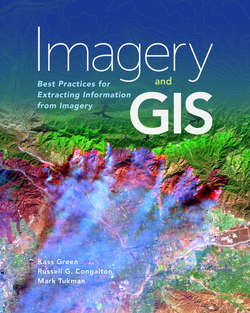Читать книгу Imagery and GIS - Kass Green - Страница 19
На сайте Литреса книга снята с продажи.
Cell Size
ОглавлениеThe cell size, or spatial resolution, of a raster will determine the level of spatial detail displayed by the raster. Figure 2.10 illustrates the effect of cell size on spatial resolution. The cell must be small enough to capture the required detail but large enough for computer storage and analysis to be performed efficiently. More features, smaller features, or greater detail in the extent of features can be represented by a raster with a smaller cell size. However, more is not always better. Smaller cell sizes result in larger raster datasets to represent an entire surface; therefore, there is a need for greater storage space, which often results in longer processing time.
Choosing an appropriate cell size is not always simple. You must balance your application’s need for spatial resolution with practical requirements for quick display, processing time, and storage. Essentially, in a GIS, your results will only be as accurate as your least accurate dataset. The more homogeneous an area is for critical variables, such as topography and land use, the larger the cell size can be without affecting accuracy.
Determining an adequate cell size is just as important in your GIS application planning stages as determining what datasets to obtain. A raster dataset can always be resampled to have a larger cell size; however, you will not obtain any greater detail by resampling your raster to have a smaller cell size. Chapter 3 discusses cell size and image spatial resolution in more detail.
